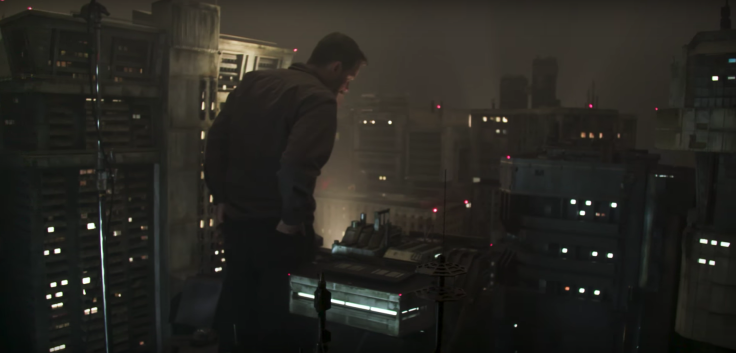Practical effects have become boutique. Often we hear about them far in advance, as a key component of a film’s marketing, as was the case with Mad Max: Fury Road, Mission: Impossible movies and Star Wars: The Force Awakens (resulting in the strange spectacle of Disney recreating, with CGI, a “practical set” for Bob Iger to pose in front of). Hack jobs like Jurassic World scramble to throw in a single robot, just to say they did.
Just as often, practical and CGI effects are blended so seamlessly they go unnoticed. Behind-the-scenes videos released after Zodiac and Wolf of Wall Street revealed how CGI is used in otherwise street-level thrillers and dramas to flesh out sets, grab near-impossible shots and capture earlier decades.
It’s simply the case that even nostalgic purists, aching for the days of exploding squibs and rubber monsters, often won’t even realize they’re being fed CGI, or, as is increasingly the case for prestige pictures, a hybrid form.
But learning that so many of the Blade Runner 2049 sets were miniature offers a rejoinder.
A new behind-the-scenes video highlights the astounding detail incorporated into the massive miniatures used for establishing shots in Blade Runner 2049, highlighting in particular the work of miniature unit director Alex Funke, who has filmed extravagant miniatures for The Lord of the Rings movies, Total Recall and The Abyss.
“It’s decades after the time of the original film, so Los Angeles has been built up a lot and LAPD, which is the newest of all the buildings, stands above all as the tallest building in town,” Funke says, standing amongst “miniatures” far taller than him.
The Los Angeles miniatures set was comprised of 37 individual buildings, each constructed to 1:48 scale. This standard is universal to most hobbyist model building, including model trains. Lego minifigs, while not explicitly designed for 1:48, represent a close approximation of person-size among the Blade Runner 2049 sets.
The exception is the Wallace Corporation building — that astounding pyramidal structure designed to both evoke and exceed the Tyrell Corporation pyramid in the original Blade Runner. Built to an astounding 1:600 scale, Wallace Tower is meant to appear over two miles tall, reducing humans to a scale measured in micrometers.
As a computer-controlled camera captures a sweeping shot of the miniature “trash mesa” set (where K follows his memories of childhood bullying), Funke makes a powerful argument for the actual utility of practical effects. “It has all of the inherent flaws of filming something,” Funke says. “Real surfaces, illuminated with real light, with all the issues of tiny, specular reflections.” To a certain degree, every surface in the world is a mirror, bouncing back light in patterns still too elaborate to be fully captured digitally.
CGI may be good enough to fool us, but a part of us recognizes the difference. The Blade Runner 2049 special effects were repeatedly praised in reviews, mostly by reviewers who wouldn’t have been aware of what was practical and what was digital. In my own review, I open with astonishment at the Los Angeles cityscape of the movie:
“The Los Angeles of Blade Runner 2049 has as its foundation seamless blocks of skyscraper-height buildings, riven by the main roads into deep, glowing trenches lit by neon advertisements, all surrounded by a forbidding seawall. The entire city, populated by replicant skinjobs and anyone too poor to leave Earth, is flat on top. This Los Angeles isn’t designed for the benefit of its inhabitants, including the blade runner K (Ryan Gosling), but serves as substructure to even larger temples of the elite. Massive buildings in the shape of pyramids and other gigantic totems project order, control, wealth and hidden knowledge. Looking at this city, this one possible future, induces awe and despair — we’ve populated the stars, but never changed society.”
Without knowing it, I had responded to the reality of the models, which my brain felt were real enough to induce genuine feelings of “awe and despair.” That’s a rare and wonderful thing.
- Stunning depiction of a dark future
- Fantastic new characters
- Rich, not a franchise-building product
- No magnetic antagonist to match Roy Batty (Rutger Hauer)
- Connection to original movie is the most boring part















![[EG April 19] Best 'Stardew Valley' Mods That Will Change](https://d.player.one/en/full/226012/eg-april-19-best-stardew-valley-mods-that-will-change.png?w=380&h=275&f=955520b8313253ee3c39c791f6210f38)



